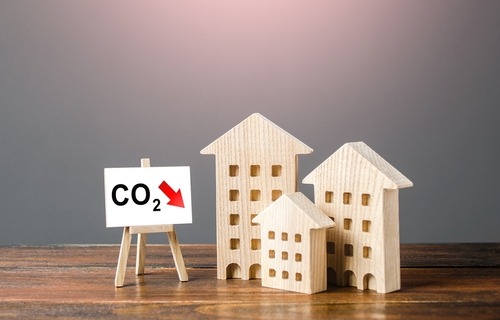DOE to award $45M for technologies that reduce carbon in buildings

The U.S. Department of Energy (DOE) awarded $45 million in funding for technologies that can transform buildings into net carbon storage structures.
The greenhouse gas (GHG) emissions associated with the material manufacturing and construction, renovation, and disposal of buildings account for about 10 percent of total annual emissions. These emissions are concentrated at the start of a building’s lifetime, making them essential to address. More importantly, these emissions are making up an increasing percentage of total building emissions as operational emissions decline due to factors like efficiency improvements and the decarbonization of the electric grid.
“Building materials and construction techniques offer huge promise as carbon sinks,” Secretary of Energy Jennifer Granholm said. “As it has done in so many other sectors of our economy, DOE’s ARPA-E is going to try to change the game yet again.”
DOE’s Advanced Research Projects Agency-Energy (ARPA-E) will fund up to $41 million for Harnessing Emissions into Structures Taking Inputs from the Atmosphere (HESTIA). It will be for the development of building materials and designs that are net carbon-negative via the removal of carbon dioxide from the atmosphere during the production process and storing carbon in the finished product.
Also, DOE is funding $4 million to develop the building life cycle analysis tools and frameworks associated with carbon drawdown and storage in building construction.
Successful proposals will reduce the environmental footprint from the production, and use of, domestic resources. They will also use building materials and designs that remove carbon dioxide from the atmosphere and store carbon in the finished product.
